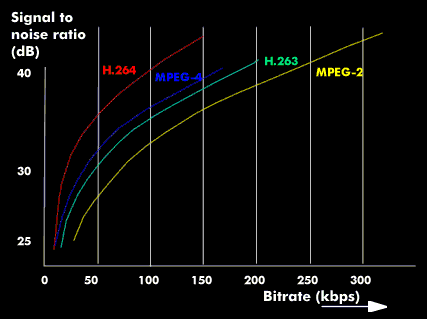video codec
Video codecs are functional units in which video compression is implemented in hardware or software. They are used wherever a video signal is transmitted over data networks. Video codecs reduce the enormous data volume of video signals so that they can be transmitted and received with the lowest possible data rate and good video quality. Used on the transmitter side, they encode the video signals by compression, and on the receiver side they decode the compressed video in encoders using a compression algorithm.
The goal of all video codecs is to reduce the amount of data while maintaining or improving video quality. Many video codecs rely on lossy compression of MPEG, mainly MPEG-2, MPEG-4 or HEVC compressions, others on lossless compression. However, these are always development-specific implementations of compression techniques. Therefore, there are many company-specific, licensable video codecs, but also various license-free open source products.
Evaluation of video codecs
One of many parameters for evaluating video codecs is the efficiency of lossy codecs, which is expressed in the effective number of bits per pixel( bpp) and depends on the bit rate. For example, if a video signal according to the PAL television standard with 720 x 575 pixels and 25 frames is to be transmitted at a data rate of 1 Mbit/s, the effective bit-per-pixel rate is 0.097. The video codec must realize this efficiency. This means, for example, that about 10 pixels are represented by one bit.
Quality evaluation is performed by mathematical methods in which the peak signal-to- noise ratio( PSNR) of the original image is related to the decompressed image. Another method for objective evaluation is the Structural Similarity Index( SSIM). In addition, there is the subjective assessment of video quality. This is concerned with how people subjectively perceive video quality.
The field of application of video codes ranges from the transmission of television images with high and highest resolution, HDTV, to videophones and video conferencing, to displays on smartphones. Hardware codecs for video include Motion- JPEG, Px64 according to H.261 and H.320, and MPEG in its various variants. Software codecs include Cinepak, Indeo, DivX, Quicktime, Video for Windows (VfW), XviD, 3ivx, VC-1, Nero Digital, HDX4, Windows Media Video(WMV), VP8 and VP9.


